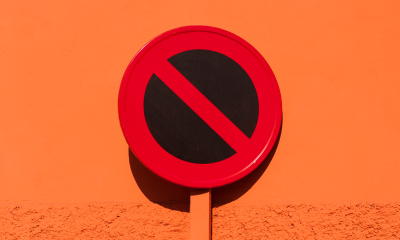Technology
‘Glitch’ died so Slack could take over offices everywhere, but traces of the game live on

Before Slack became the multibillion-dollar business it is today, it was an oddball multiplayer online game on the brink of financial failure.
The game was called Glitch. It had a loyal but modest following of 150,000 people. Players scavenged for weird items and talked to strange characters. But most importantly, they talked to each other — setting the stage for a work chat app that would grow to host 12 million users and 65 of the Fortune 100 companies.
But Slack employees haven’t forgotten its roots, and bits and pieces from its early days as a video game lurk in the app.
How Glitch became Slack
Glitch was an adventure game that allowed players (or “creatures,” in Glitch speak) to shape the worlds inside the minds of 11 giants through quests and cooperative gameplay.
When the game shut down in 2012, the company behind it pivoted, rebranded to Slack, and focused instead on incubating the chat features used between Glitch players and staff.
“Glitch was a very odd game. It was a giant sandbox in that you can make what you want of it,” said Slack’s head of voice and tone, Anna Pickard, who was Glitch‘s lead game writer (and a player who went by “annapee”).
“But the real energy of the game unlocked when you started collaborating with other people. And I think that’s a really interesting crossing with Slack,” she said. “When we’re thinking about the way we design, we’re giving people the same kind of sandbox, but in which to work.”
Glitch players can chat and interact in the open, just as how Slack users can communicate and use emoji to react in public channels.

Image: Glitch via Yeti Spaghetti
Game features were molded into productivity tools, including private messages.
Similarly, Glitch players were able to publicly chat and interact with others near them in the imaginary world. Now, Slack users are able to communicate and react to messages in public channels.
And then there are the characters who became Slack emoji. Piggy rewarded players with meat and gardening supplies in exchange for kindness. Crab rewarded players who collected musical talent. Chick Cubimal unlocked trophies.
Four Glitch-inspired emoji: Dusty Stick, Piggy, Cubimal Chick, and Glitch Crab

Image: Screenshot via Slack
And fan favorite Dusty Stick spread happiness. The idea, Pickard told me, was that players could learn from each other and swap items to accomplish their goals.
Glitch‘s legacy
Glitch is dead. Its remains, however, were turned into pieces of open-source code available to anyone willing to offer them new life. And Glitch‘s spirit lives on through “moments of delight” sprinkled through Slack’s interface.
Pickard pointed to Slack’s “all unreads” tab. When users check off boxes that indicate they have finished sifting through their messages, Slack rewards them with emoji and words of encouragement. Yesterday, mine was a clapping emoji with the message: “Everything unread is now read. You’ve done it.” Today, it was a horse emoji appended to the message: “You’re all read. Here’s a pony.” Tomorrow, it could be any one of 11 other combinations.
Slack rewards user with emoji and words of encouragement when they finish sifting through their unread messages.

Image: Screenshot Via Slack
“It should feel like a colleague who treats you with respect and admiration, with courtesy and humility,” Pickard told me. “People at work are people first. We don’t stop needing to be seen and acknowledged as humans when we walk into the office at 9 a.m. [Slack] has to be open and flexible enough for people to create the way they want to work within it — but with enough thoughtful touches, guidance, parameters and customizability to make it pleasant and simple to be productive in.”
Pet rock was that thoughtful touch in Glitch — it’s “your pal on the inside.” It walked you through new features in the game, and told you when new missions are available. Slackbot does the same for its users, albeit slightly upgraded with AI. It greets all first-timers by saying “Hi, Slackbot here,” and automatically fills in their user profile based on a conversation.
Slackbot also answers questions from users at any time, occasionally returning with “oops” moments that — well, to put it nicely — makes it sound all the more human. Just the other day, I turned to Slackbot for information for this story. It returned with: “I’m sorry, I don’t understand! Sometimes I have an easier time with a few simple keywords.”
Slackbot isn’t the smartest AI out there, but that makes it all the more human.

Image: Screenshot via Slack
“It’s about helping people feel like their communication doesn’t have to be tightly buttoned and perfectly formatted like emails might be,” Pickard said. “It’s about having a conversation.”
But not everyone’s a fan. Some have slammed Slack for “ruining work” by saying it discourages face-to-face engagement between co-workers.
But that could just be nature of work now. Companies today rely on software like Slack to communicate across cities, countries, and even continents.
Nowadays, 70 percent of professionals work remotely at least once a week. Among the top challenges confronting them are loneliness and difficulty collaborating. And that’s where Slack comes in handy.
Shouty rooster is a reminder for Slack users to be courteous to co-workers from other time zones.

Jamie DeLanghe, Slack’s director of product management, told me the company’s social personality helps build kinship between co-workers.
That consideration is baked into Slack’s design. For example, DeLanghe points me to Shouty Rooster, a bright red chicken that alerts users when they’re about to send notifications to people across time zones, potentially waking them up in the middle of the night.
Pickard told me about how she tells new hires that “the culture turned inward creates our product, and the culture turned outward creates our brand.” Essentially, how Slack employees use the platform to communicate internally influences how the external product is delivered to users.
Immediately, that reminded me of the way I use #pizza-squad, a small channel where a few fellows at Mashable exchange weird thoughts and ideas that fuel the creative, fun energy that goes into our work.
What started as a way for us to get together after the company’s holiday party evolved into a place where a certain bloodhound in our group announces free food finds around the office. Sometimes, we use it to communicate via GIFs. Other times, to hash out pitch ideas, and for questions like “HELP! How should I paraphrase this?”
In the process of writing this story, I shared some of my favorite Slack quirks with #pizza-squad. The “hummus” notification sound, recorded from Pickard’s British accent. The Dusty Stick. And my favorite: reaction limits. One of us decided to put it to the test by reacting to a message 23 times. By the 24th time, Slack responded with: “For reasons of performance and productivity and brevity being the the soul of wit, you can add up to 23 emoji to one message, but no more.”
It’s Slack’s way of redirecting users’ attention to work when they’re in a playful mood.

It was a reminder that being intentional with our words and reactions is key to building meaningful connections. A reminder of when we should speak, and when we should stop. After all, Slack is — despite what its name may suggest — “where work happens.”
-

 Business7 days ago
Business7 days agoFormer top SpaceX exec Tom Ochinero sets up new VC firm, filings reveal
-

 Business6 days ago
Business6 days agoConsumer Financial Protection Bureau fines BloomTech for false claims
-

 Business4 days ago
Business4 days agoLangdock raises $3M with General Catalyst to help businesses avoid vendor lock-in with LLMs
-

 Entertainment4 days ago
Entertainment4 days agoWhat Robert Durst did: Everything to know ahead of ‘The Jinx: Part 2’
-

 Business6 days ago
Business6 days agoKlarna credit card launches in the US as Swedish fintech grows its market presence
-

 Entertainment3 days ago
Entertainment3 days agoThis nova is on the verge of exploding. You could see it any day now.
-

 Entertainment7 days ago
Entertainment7 days agoHow to watch ‘The Sympathizer’: Release date and streaming deals
-

 Entertainment6 days ago
Entertainment6 days agoHow to set boundaries in the early stages of dating






















